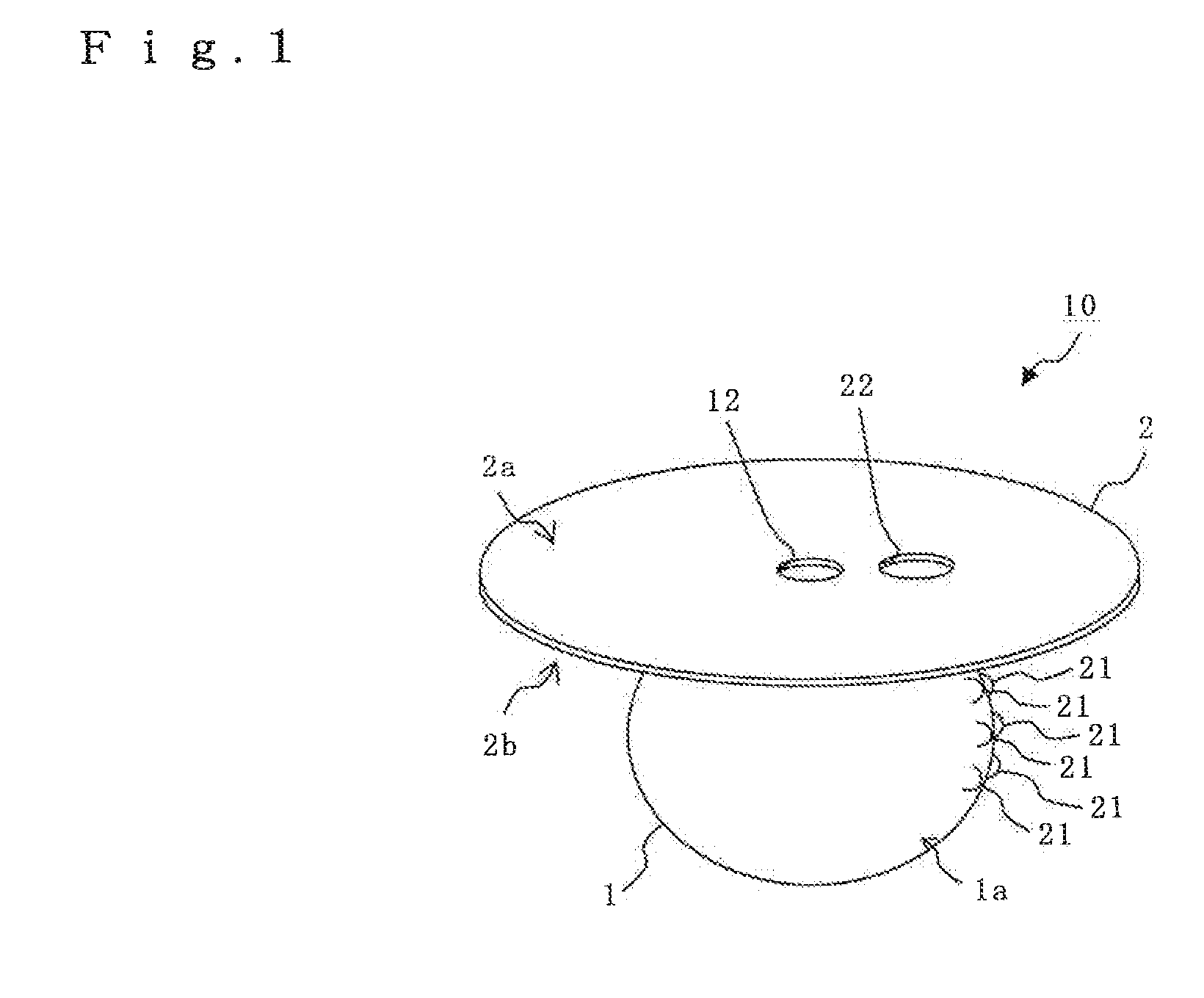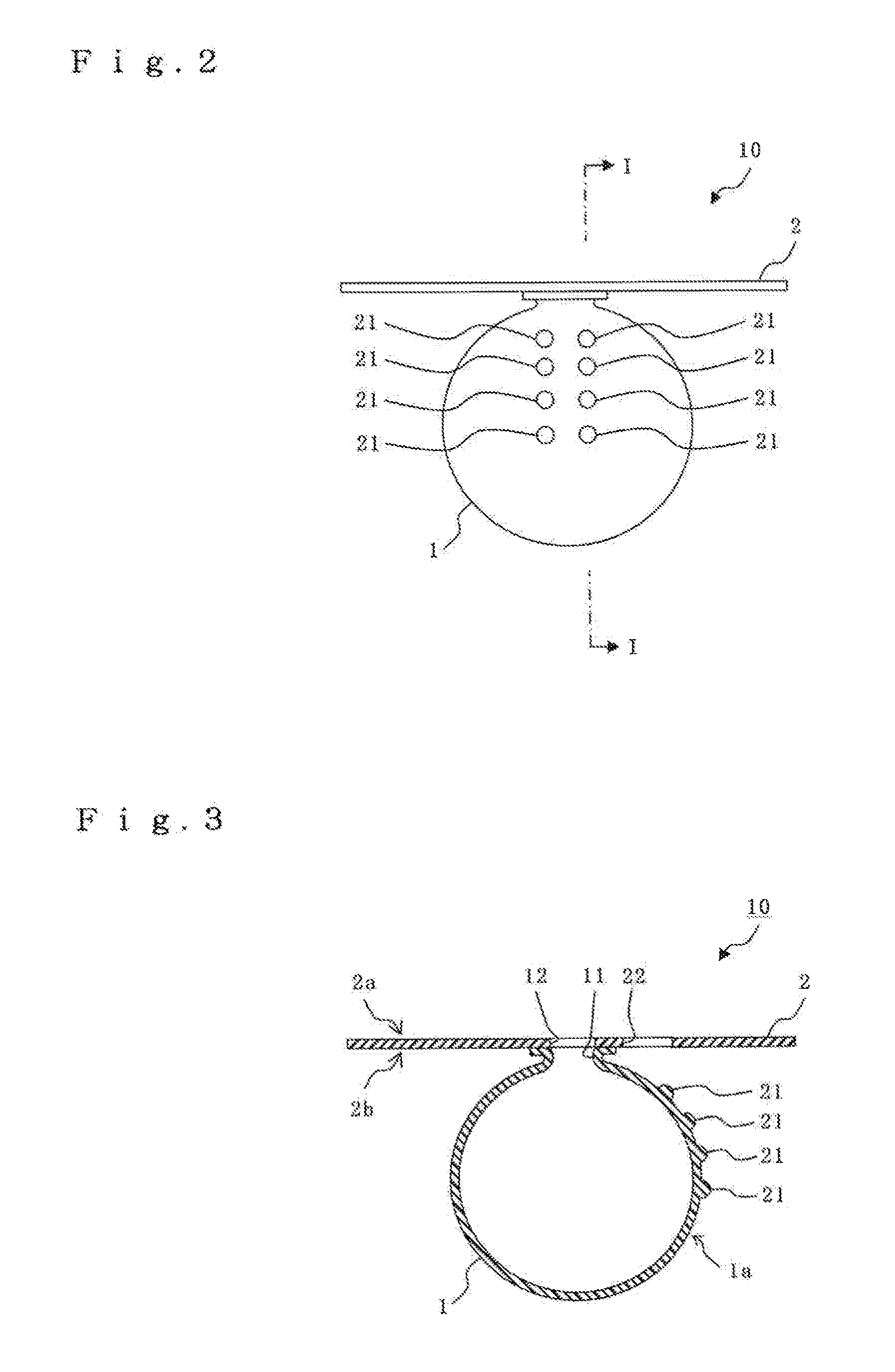Aneurysm embolization device
- Summary
- Abstract
- Description
- Claims
- Application Information
AI Technical Summary
Benefits of technology
Problems solved by technology
Method used
Image
Examples
embodiment 1
[0060]As shown in FIGS. 1 to 3, the aneurysm embolization device 10 of the present embodiment includes a balloon dome part 1 and a balloon plane part 2. Incidentally, FIG. 1 is shown schematically with slight exaggeration to facilitate the understanding of functions of the aneurysm embolization device of the present invention (including functions of both the balloon dome part and the balloon plane part).
[0061]The balloon dome part 1 is a sac body, which is inserted into an aneurysm, expanded by influx of blood, and left in the aneurysm. This balloon dome part 1 is made of a flexible, stretchable and thin biocompatible material using, for example, latex or silicone rubber. Additionally, it is desirable that the entire outside diameter of the balloon dome part 1 be almost equal to or slightly smaller than the inside diameter of the aneurysm.
[0062]The balloon dome part 1 includes gap forming members 21. The gap forming members 21 have a function of forming a desired non-contact space w...
embodiment 2
[0078]In the present invention, the influx of blood into the balloon dome part 1 can be ensured. In other words, the diameter of the opening 11 is a size that at least allows influx of blood from the influx hole 12 of the balloon plane part 2 in the above-described balloon dome part 1 of the first embodiment. However, if the diameter of the opening 11 is small, the opening 11 may be twisted during operation of the aneurysm embolization device; as a result, there is a risk to block influx of blood into the balloon dome part 1. Therefore, a third embodiment of the present invention is different from the above-described first embodiment in the structure of an opening 11 of a balloon dome part 1.
[0079]Note that, in other embodiments to be described below, description will be given mainly of aspects which are different from those in the above-described first embodiment of the present invention. Therefore, the same letters or numerals are given to constituents which are similar to those i...
embodiment 3
[0083]In the present invention, an aneurysm embolization device can be left in a blood vessel more stably. In other words, a third embodiment of the present invention is different from the above-described first and second embodiments in that the third embodiment includes means for stabilizing the balloon plane part 2 in a blood vessel.
[0084]Note that, in other embodiments described below, description will be given by taking, as an example, the balloon dome part 1 having a structure with the opening 11 described in the second embodiment.
[0085]An aneurysm embolization device of the present embodiment including mean for stabilizing the device in a blood vessel can be exemplified as shown in FIG. 6. The aneurysm embolization device shown here has a beneficial effect on usage for a type of aneurysm which is exerted from a side surface of a blood vessel, for example.
[0086]As shown in FIG. 6, an aneurysm embolization device 30 of the present embodiment includes the balloon dome part 1 and ...
PUM
 Login to View More
Login to View More Abstract
Description
Claims
Application Information
 Login to View More
Login to View More - R&D
- Intellectual Property
- Life Sciences
- Materials
- Tech Scout
- Unparalleled Data Quality
- Higher Quality Content
- 60% Fewer Hallucinations
Browse by: Latest US Patents, China's latest patents, Technical Efficacy Thesaurus, Application Domain, Technology Topic, Popular Technical Reports.
© 2025 PatSnap. All rights reserved.Legal|Privacy policy|Modern Slavery Act Transparency Statement|Sitemap|About US| Contact US: help@patsnap.com



